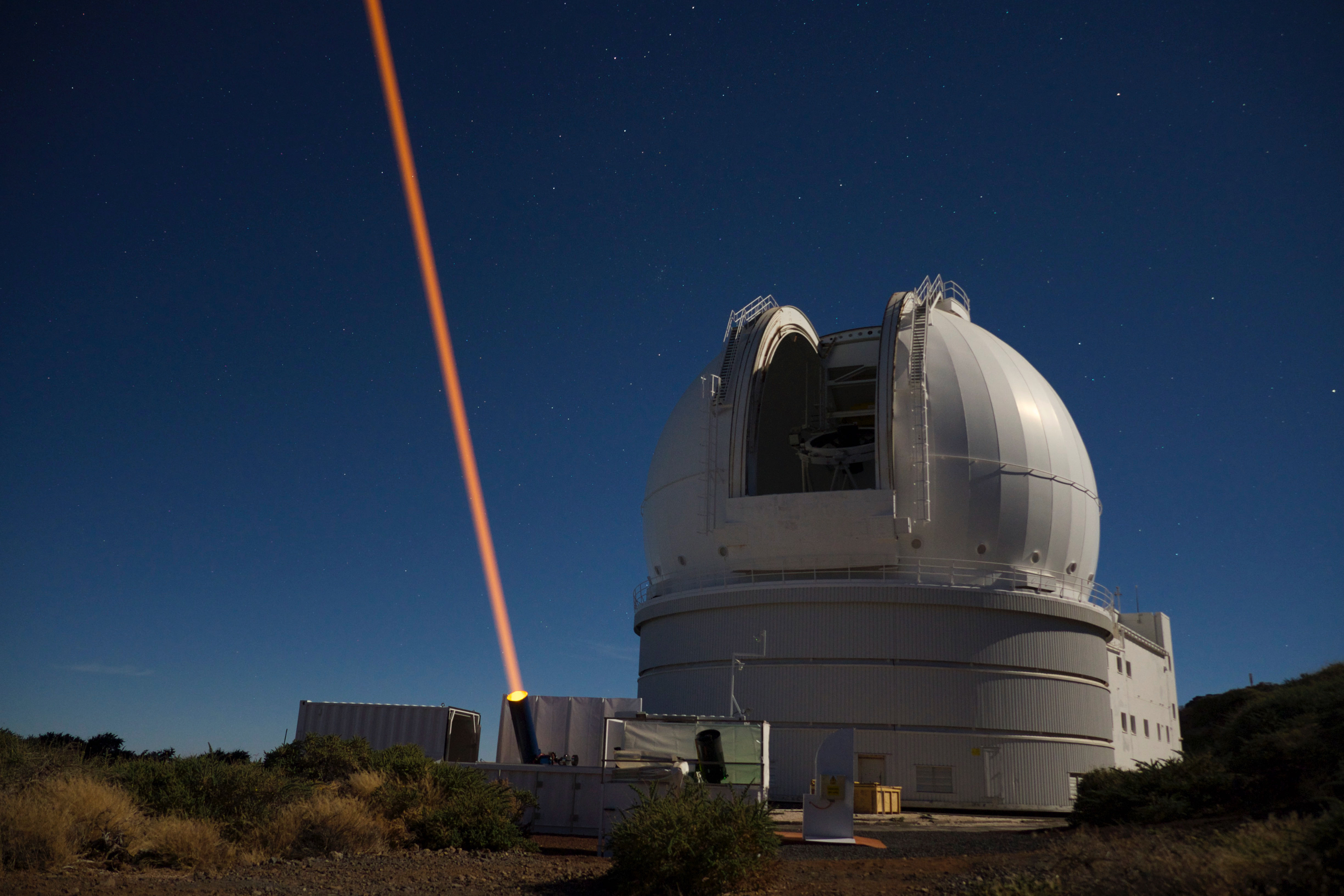Astronomical Adaptive Optics Overview
The Earth’s turbulent atmosphere blurs images of distant stars and galaxies, greatly reducing the ability of astronomers to see the finest details of distant stars and galaxies. Adaptive optics is a technology that allows astronomers to sense and correct for the image distortions caused by the atmosphere. Adaptive optics enables us to reach the full resolving power of the large diameter telescopes, and routinely deliver sharper images than those that are possible from space-based telescopes such as the Hubble or James Webb Space Telescopes.
 Sodium Laser Guide Star testing at the William Herschel Telescope in La Palma
Sodium Laser Guide Star testing at the William Herschel Telescope in La Palma
CfAI have been involved in the adaptive optics research for over 25 years, and have developed and built adaptive optics systems for several of the largest telescopes in the world. We specialise in the development of wide-field adaptive optics systems, particularly using laser guide stars, real-time control systems and wavefront sensors. We are currently working on the development of the adaptive optics systems for the first generation of instruments planned for the 39 metre diameter Extremely Large Telescope being built in Chile


/prod01/prodbucket01/media/durham-university/departments-/physics/cfai/CfAI-Webpage-Banner-smaller.jpg)